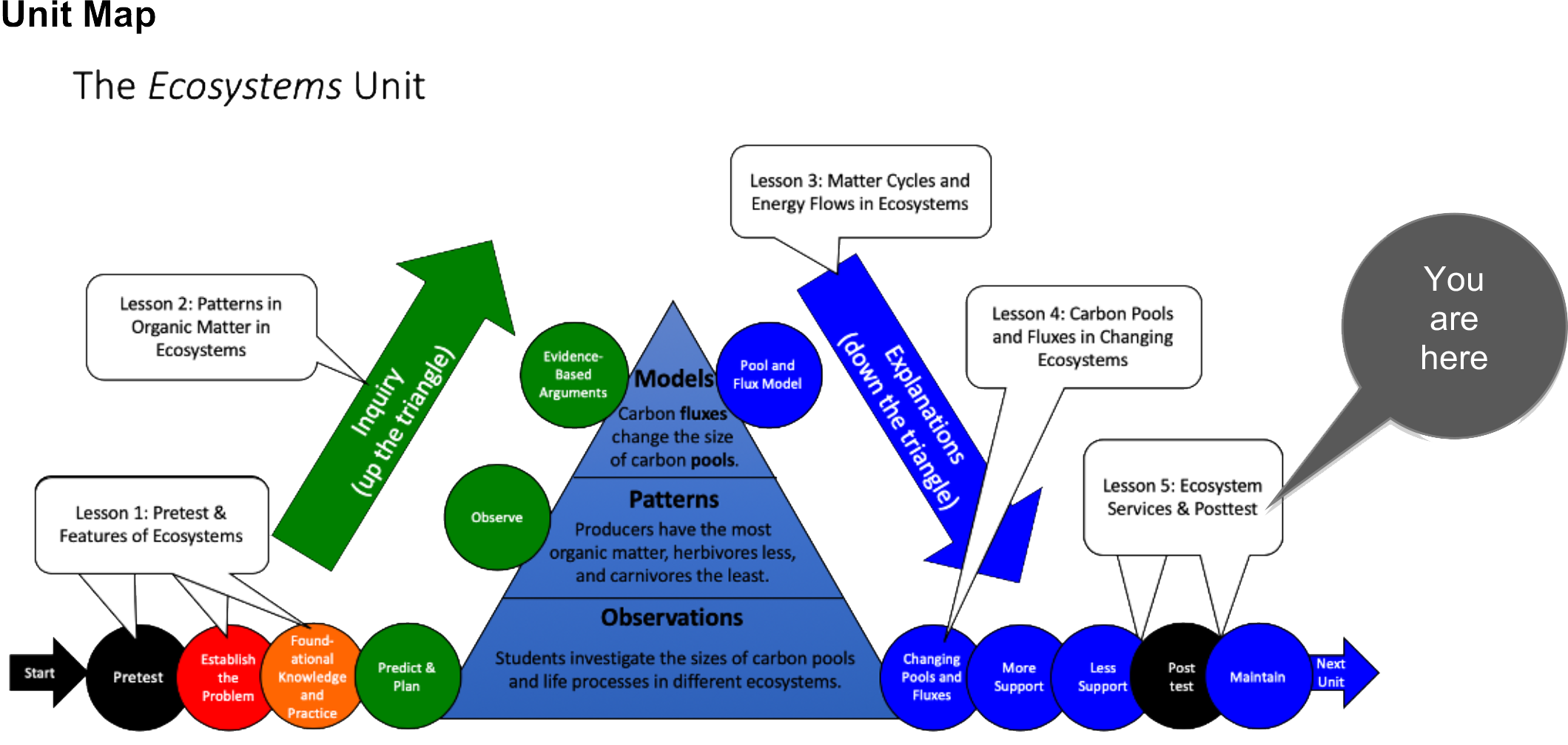Transformations in Matter and Energy Carbon TIME is an NSF-funded partnership led by Michigan State University
Ecosystems | Lesson 5 - Ecosystems Applications and Unit Posttest
Overview
Students learn about how humans depend on ecosystem products and services to survive and how we manage ecosystems to provide products and services that we want, as well as how increasing one product or service can decrease others. They develop posters about different ecosystems and complete the unit posttest.
Guiding Question
How do humans change ecosystems to provide products and services that we need?
Activities in this Lesson
- Activity 5.1: Introduction to Ecosystem Products and Services (40 minutes)
- Activity 5.2: Ecosystem Products and Services Jigsaw (50 minutes)
- Activity 5.3a or 5.3b: Ecosystem Posters (40 minutes)
- Activity 5.4: Ecosystems Unit Posttest (20 minutes)
Unit Map

Target Student Performance
|
Activity |
Target Performance |
|
Lesson 5- Ecosystems Services and Posttest (students as explainers) |
|
|---|---|
|
Activity 5.1: Introduction to Ecosystem Products and Services |
Students explain how humans change matter cycling and energy flow in ecosystems to produce products and services. |
|
Activity 5.2: Ecosystem Products and Services Jigsaw |
Students explain how humans manage matter cycling and energy flow in specific ecosystems to produce products that they need (beef, corn, forest). |
|
OR
|
Students use posters to explain matter cycling, energy flow, and ecosystem services in a different ecosystem. |
|
Students use posters to explain matter cycling, energy flow, ecosystem services, and effects of disturbances in a different ecosystem. |
|
|
Activity 5.4: Ecosystems Unit Posttest |
Students show their end-of unit proficiencies for the overall unit goal: Questioning, investigating, and explaining how carbon cycles and energy flows in ecosystems. |
NGSS Performance Expectations
High School
- Ecosystems: Interactions, Energy, and Dynamics. HS-LS2-2. Use mathematical representations to support and revise explanations based on evidence about factors affecting biodiversity and populations in ecosystems at different scales.
- Ecosystems: Interactions, Energy, and Dynamics. HS-LS2-5: Develop a model to illustrate the role of photosynthesis and cellular respiration in the cycling of carbon among the biosphere, atmosphere, hydrosphere, and geosphere.
- Ecosystems: Interactions, Energy, and Dynamics. HS-LS2-6: Evaluate claims, evidence, and reasoning that the complex interactions in ecosystems maintain relatively consistent numbers and types of organisms in stable conditions, but changing conditions may result in a new ecosystem.
Middle School
- Matter and Energy in Organisms and Ecosystems. MS-LS2-4. Construct an argument supported by empirical evidence that changes to physical or biological components of an ecosystem affect populations.
- Earth’s Systems. MS-ESS2-1. Develop a model to describe the cycling of earth’s materials and the flow of energy that drives this process.

 Download PDF of Lesson 5 Teacher's Guide
Download PDF of Lesson 5 Teacher's Guide